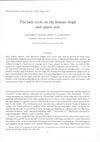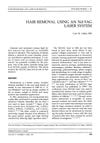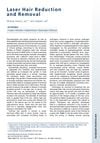Optical Hair Removal: Scientific Principles, Device Comparison, and Safety Guidelines
June 1999
in “
Seminars in cutaneous medicine and surgery
”
TLDR Optical hair removal devices showed potential for long-term hair removal in 1999.
In 1999, the field of optical hair removal was emerging as a promising solution for individuals dissatisfied with traditional hair removal methods. Several devices, including Nd:YAG, ruby, alexandrite, diode lasers, and xenon flashlamps, had been developed and were gaining popularity due to aggressive marketing. Despite this, there was significant controversy and confusion regarding their use. The article aimed to clarify the scientific principles behind optical hair removal and discussed the pros and cons of the available devices. It also provided treatment and safety guidelines for practitioners. Although the technology was still new, initial reports suggested that these methods could offer long-term hair removal efficacy.








